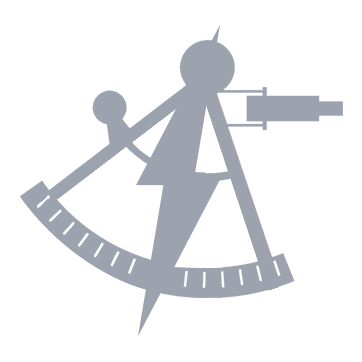Less than twenty minutes after the order had been given, two of the Volga-class runabouts assigned to Arcturuslifted up from the hanger deck and headed towards the ore hauler designated Cardinal 7. Between the freighter’s shielding and interference created by radiation and particulate matter left behind from a century of bringing raw dilithium from the mines to Romulan military installations, regular transporter use would be impossible without pattern enhancers. Halo 1, with Captain Alesser and Hazard Team Alpha, would secure the ship’s forward hanger and set up two beam-out sites there. Halo 2, with Lieutenant Commander Bowens and Hazard Team Beta, would see to the aft hanger. Between them, Alesser estimated that they could have the nearly two-thousand refugees beamed over to Arcturus within two hours—assuming nothing went wrong.
“Gladstar, Halo 1. On approach to Cardinal 7. The board is green,” Marshall said from the helm of the Ausable, designated Halo 1 for the duration of their operation.
“Halo 1, Gladstar. Telemetry confirmed. Continue approach,” one of the flight control officers aboard Arcturusreplied.
The Romulan-built, Reman-crewed freighter loomed closer. While it was nowhere near as large as Arcturus, it was meant to move millions of tons of ore at a time and had some serious mass. As with anything Romulan, there were sharp angles everywhere one might expect a curve, which gave it a menacing appearance even without any weapons. The beak-like forward section was connected by a long spine to a rectangular engine pod, with the massive ore pods attached to that spine in between them. Halo 1 was on a course head-on to intercept Cardinal 7, the maw of its hanger bay looming in front of them.
“Captain, we may have a problem,” Robinson reported from the station next to Marshall’s.
“Please don’t tell me you’re about to disappoint me on your first hazard team mission, Lieutenant,” Alesser chided.
“I never disappoint for long, sir,” Robinson said with a smirk. Thankfully, he continued with his report before Alesser would have felt compelled to chastise him for being too flirtatious in a serious situation. As the new number two of the team, Robinson had a lot to prove. As a fellow second-in-command, he knew the feeling. “The handshake protocols the Remans provided us with are working, but the hanger has no power. The doors are stuck in the open position, and the forcefield is inoperable.”
“Of course they are. Why would this be easy?” Alesser quipped. “What about a docking port?”
“I’m not seeing any that are operational, sir. What if we used the runabout’s shields to seal off the bay and then pumped in our own atmosphere?” Marshall suggested.
“If we reconfigure the shields to function that way, they will stop working as the sort of shields that deflect weapons fire,” Robinson replied. “Plus, it would take three or four hours for our environmental systems to fill a bay of that size.”
“What about using the shuttle’s power supply to get the bay working then?” the helmsman asked.
“That has merit, but we’d need to adjust the frequency and flowrate of our systems to match those used by Romulan EPS grids unless we want to burn out the equipment entirely,” Alesser agreed. “I hope you’ve been studying your manuals, Mr. Robinson,” Alesser said before reaching past the blond lieutenant to tap the ship-to-ship communications button.
“Halo 2, Halo 1. How are things looking on your end?”
“We’re on final approach. All systems are nominal. We might have to haul a few crates out of the way to set up our evac zones, though,” Bowens replied.
“Very well. The forward hanger has no power, so we’re going to have to solve that problem before setting up. Let whoever’s in charge on your side know what we’re up to,” Alesser ordered.
“Halo 2 confirms.”
“Robinson, update the bridge on our situation, and then join me in the back,” Alesser said, leaving Marshall and Robinson alone in the cockpit.
The first officer passed through the doors into the runabout’s middle compartment. The rest of Hazard Team Alpha was waiting in their standard gear: exoprene-reinforced uniforms with utility belts and plenty of space for accessories. They were helping each other into the chest shells that turned their suits into fully fledged EV equipment, all in the appropriate departmental colors.
Windsor, the team leader, turned to Alesser. “We were listening on the intercom, sir. I recommend detailing Shadi and Taom to get the doors closed while Seagraves and Zhou get the forcefield emitters back online. Robinson and I can get the power back,” the lieutenant said.
“You know your team best, Windsor. Accomplish the objective how you see fit,” Alesser replied as he pulled open his uniform jacket. “Someone replicate me a suit. I’ll assist in getting the power back online.”
“Is that wise, sir?” Windsor asked.
“It’s not my first spacewalk, Lieutenant,” Alesser said, shrugging it off.
“No, sir. But it’s a spacewalk on a damaged Romulan vessel,” Windsor insisted. “With all due respect, sir… The purpose of the hazard team concept is to keep senior officers out of life-threatening situations. We’ll remain on the comm at all times,” he said, demonstrating much more of a backbone than Alesser might have expected from the always-smiling lieutenant.
The rest of the team was doing an outstanding job at looking at anything other than Windsor or Alesser at that moment. Alesser’s initial reaction was annoyance at the lieutenant’s impropriety and then respect for his willingness to speak his mind to a more senior officer. What he was saying had merit, but Alesser wasn’t precisely the hands-off sort.
“The captain sent me to ensure the success of this operation personally. Don’t you think that implies that I shouldn’t be waiting on the runabout while you do all the work?” Alesser asked, arms crossed.
“Yes, I suppose, sir…,” Windsor replied, clearing his throat.
“On the other hand, someone with engineering experience will need to keep an eye on our EPS grid here. I’ll stay on the runabout,” Alesser relented to the lieutenant’s visible relief. “I still want one of those suits because I’m coming out if you’re not done in twenty minutes.”
“Aye, sir,” Windsor replied, nodding to Crewman Seagraves, who went over to the replicator to fabricate what Alesser had requested.
Robinson entered the compartment a few moments later.
“We’re coming in for a landing. The good news is that there’s no debris like there is in the aft hanger, sir,” he reported before Windsor started helping him into his EV harness. “Is everyone ready to save some Romulans?” he asked.
“Remans,” Alesser interjected.
“Remans, sir,” he replied, with an uncharacteristic flash of doubt on his face corresponding to the gold shell clicking into place around his chest and torso.
Going from a desk job to ‘real’ Starfleet service is something Robinson had been hoping for—and training extensively for—since he’d started working for Admiral Hayden. The young man was in top physical shape and had exemplary scores, good enough to earn him a spot on a hazard team, but he lacked practical experience.
“You’ve got this. All of you,” Alesser said, reaching up to squeeze Robinson on the shoulder for a moment before the deck rumbled slightly under them, signaling that they had touched down on the Reman vessel. “Mr. Windsor, you know what to do,” he said before returning to the cockpit, grabbing the hazard suit from Seagraves on his way.
With the first officer returning forward, Lieutenant Windsor had his team make sure that their helmets and gloves were securely attached. They all filed into the aft compartment, where Robinson activated the outer forcefield and lowered the aft ramp. They could see that beyond the runabout, the hanger was pitch-black.
“Halo 1, Windsor. Can we get some light out here?” Windsor asked.
“We’ll do what we can. Use your helmet overlays if you need to,” Alesser replied.
“Aye,” the lieutenant confirmed. “Maglocks on, everyone,” he ordered.
There was a series of clunks as six pairs of boots magnetized to the runabout’s deck plating before they clomped down the ramp into the hanger, passing through the forcefield and into the airless environment of what felt very much like a derelict vessel. The runabout activated all of its navigation lights, which helped some, but they would barely have been able to see without the image enhancement and thermal overlays on their helmets.
“Shadi and Taom, look for the emergency hydraulic release for the hanger doors. There should be a way of closing them in situations like this,” Windsor ordered, sending the Bajoran and Trill ensigns forward towards the open mouth of the ship. “Chief Zhou, take Seagraves to see about those forcefield generators. We stay with our partners at all times. Understood?”
There was a simultaneous round of “Yes, Lieutenant” from everyone before they dispersed. Windsor turned to Robinson, who was scanning the room with the integrated tricorder on his EV gauntlet.
“I think I’ve found an auxiliary access tap for their EPS grid. 10 meters that way,” he said, pointing towards an area towards the rear of the ship. “If this is anything like a Starfleet ship, that should be our way of repowering the equipment here.”
“Awesome. Let’s check it out,” Windsor agreed.
The two lieutenants walked slowly towards the access point; when they got to the spot Robinson’s tricorder indicated, they had to get down on their hands and knees to remove a deck plate. It was difficult, awkward work in an environment without gravity to get the right leverage, but they managed after some struggle. Once it was free, it revealed an access port about thirty centimeters across, far larger than most normal EPS taps.
“The translation says this is a slot for an emergency power cell,” Windsor said once his helmet had a chance to read the markings around the terminal. “We’ll either have to find one or fabricate an adapter.”
“Well, if there’s a slot, hopefully, some of those batteries are somewhere nearby?” Robinson asked, standing up to resume scanning.
“Shadi, Windsor. We’ve found the hydraulic access point, but it’s fused. There’s no way we’re getting these doors closed without some heavy-duty cutting equipment and about a week of work,” the engineer reported.
“Zhou here. The good news is that the forcefield emitters are perfectly fine. They just need power,” Chief Zhou interjected.
“All right. We’ve just found an emergency power slot. Robinson is sending you the approximate dimensions of the cell that fits there. We need to find one if it’s here,” Windsor said, glancing up at Robinson.
There was very little in the room, at least on the main floor, but there were dozens of storage lockers and bins along the side of the hanger. Windsor and Robinson proceeded to the nearest bank of them, finding some well-used mining equipment and a bunch of isolinear chips in the first bin. The team leader was mindful of the time; getting done before Alesser’s twenty minutes were up was as much a personal challenge as it was a professional imperative to keep the first officer from entering into needless risk.
“Halo 1, Windsor. We’re sending you the dimensions and specs of the port we found. Can you fabricate something that will fit?”
Alesser didn’t reply immediately, likely looking at the information.
“Probably. I’ll send the data back to Arcturus and see if we have anything about Romulan emergency power cells in our files. I guess that means you haven’t found one yet?” he asked.
“Not y—,” Windsor started before Robinson opened the next bin to reveal at least six cylindrical devices that looked very much like what they were supposed to find. “I think we have something.”
Robinson nodded and started scanning them. “They’re intact, but none of them are energized. We’ll need to fill them with plasma from the runabout,” he said.
“Good work. Bring them back to the runabout, and we’ll figure out how to recharge them,” Alesser ordered.
“Shadi, Windsor. Meet us at the runabout. Seagraves, we could use some help over here.”
Crewman Seagraves was even taller than Windsor was, and he spent more time in the gym than almost anyone on Arcturus. Even with no gravity to contend with, his strength was helpful in relocating the awkwardly-shaped emergency batteries back to the runabout. When they got there, Shadi already had one of the access ports on the starboard nacelle removed and was talking through the specifics of the procedure with the first officer.
Taom emerged from the runabout with a funny-looking cable, separated in the middle by a frequency modulator and flow regulator, which would transform the plasma from Halo 1’s warp nacelle into something that the Romulan ship could use without damage.
“How long will this take?” Windsor asked as Taom and Shadi worked to hook one of the batteries up to their runabout.
“We’ll have it done in our time limit, sir,” the engineer said, grinning through her helmet.
The team managed to get the emergency battery into the receptacle with about two minutes to spare on Alesser’s clock. It slid into place easily, causing the panel around it to light up, but nothing else did. Once Windsor figured out the instructions to pull out a handle and twist it, the rest of the room lit up, and the entrance to the hanger crackled with green energy. A tiny status display next to the power cell showed that the environmental systems had been brought back online, which meant they also had gravity again.
“How long will this be able to power the hanger?” Windsor asked.
“Five or six hours. Probably more if we lower the air pressure in the room,” Shadi replied.
“Good. That will give you time to find the actual source of the power failure and fix it,” Windsor said. He checked his gauntlet tricorder, which flashed a green light to show that the air was breathable about a minute after he replaced the power cell. He took his helmet off, and the smell of mining equipment exposed to vacuum hit him—stale oil and grime—even after just a few moments of being oxygenated again.
“All clear, Halo 1,” Windsor reported.
Alesser stepped out of the runabout a few moments later, where he’d likely been waiting just in front of the forcefield for the signal. He walked over to Windsor and flashed him a grin.
“Good work. A minute or two longer, and I’d have had to start micromanaging,” he teased. “Let’s get the pattern enhancers set up. I want clear lines of sight and a large area for staging. The other team has already started beam-outs.”
Before the team could react and follow those orders, the doors to the ship’s interior opened, and people started to pour through. They were all Reman, and most were dressed like miners or other hard laborers. Their presence on the ship suddenly made more sense, though it was still hard to fathom how anyone would be willing to put up with the conditions there.
Windsor instinctively moved between the crowd and Captain Alesser but was dumbfounded when nothing happened. The Remans didn’t start running towards their runabout or mobbing them but started forming orderly lines. It was a show of dignity, even in the face of hardship, making Windsor stand up straighter.
“Let’s get these people out of here, Alpha Team,” Windsor ordered.

 Bravo Fleet
Bravo Fleet









